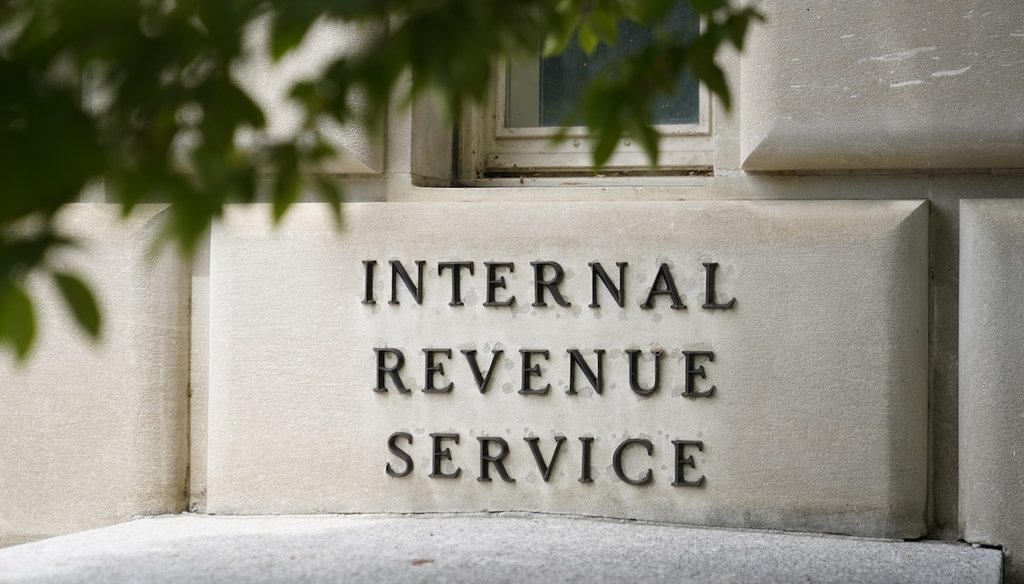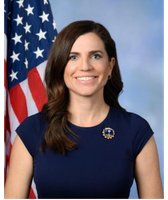Stand up for the facts!
Our only agenda is to publish the truth so you can be an informed participant in democracy.
We need your help.
I would like to contribute

(AP)
If Your Time is short
-
On tax policy, Donald Trump would prioritize income tax cuts for wealthier Americans and corporations; Kamala Harris would raise taxes on those groups.
-
Harris would expand the child tax credit for families with newborns; Trump would eliminate taxes on Social Security benefits and overtime. Both candidates would jettison taxes on tipped income.
-
Trump’s plan leans on a sharp increase in tariffs and the expectation of faster business growth. Harris, by offering a more modest tax cut package, would create less debt than Trump’s plan.
Updated with additional promises, Oct. 13, 2024
One of the most important questions many Americans have in an election is how presidential candidates would approach taxes. For this year’s nominees, former President Donald Trump and Vice President Kamala Harris, their answers have little in common.
Trump would prioritize income tax cuts for wealthier Americans and corporations; Harris would raise taxes on those groups.
Harris would expand the child tax credit for families with newborns; Trump would eliminate taxes on Social Security benefits and overtime.
Both candidates would jettison taxes on tipped income.
How would they pay for these proposals?
Trump’s plan leans on a sharp increase in tariffs and the expectation of faster business growth. But most economists are skeptical that tariffs will benefit the economy or cover the revenue loss to the U.S. Treasury.
Harris, by offering a more modest tax cut package, would create less debt than Trump’s plan. However, projections show slower economic growth under her plan, partly because of corporate tax increases.
Here’s a rundown of the candidates’ tax plans and how they would affect households, the federal budget and the economy.
What tax policies would Trump pursue?
Trump would extend the tax law he signed in 2017, which lowered taxes for all income groups, at least initially; wealthier taxpayers benefited disproportionately. The law is set to expire at the end of 2025.
Over 10 years, renewing the tax law would cost an estimated $5.3 trillion in federal tax revenue, according to the Committee for a Responsible Federal Budget, a group analyzing the federal budget.
Also, Trump would reduce the corporate tax rate from 21% to 15% for companies that make their products in America. Trump’s 2017 law had already cut the corporate tax rate from 35% to 21%. This would cost an additional $200 billion in federal tax revenue over 10 years, the committee estimated.
Trump has also floated several more targeted tax cuts, including ending taxation on Social Security benefits, tips and overtime work. Collectively, these three changes would cost about $3.6 trillion in federal tax revenue, the committee projected.
Trump also said he would restore the state and local tax deduction, which lets taxpayers deduct the state and local tax payments they make from their federal taxes, something that hits harder for affluent households in higher-tax blue states. Trump’s 2017 law had capped the deduction at $10,000.
Trump has promised to reduce taxation for Americans living overseas. Some Americans living abroad pay taxes to both the U.S. and a foreign country, although they can deduct the taxes they paid to the foreign government. Critics suggest that this could incentivize higher-income Americans to move to lower-tax countries overseas and escape U.S. tax liability.
Trump has also discussed replacing the individual income tax with tariffs, though he has not formally advocated this approach. Individual income taxes now account for about half of federal revenue; about one-third comes from payroll taxes shared by workers and employers. About 9% comes from corporate income taxes and 2% comes from tariffs.
What tax policies would Harris pursue?
Harris has said she will not raise taxes for people earning less than $400,000, which would continue a policy promise of President Joe Biden.
Unlike Trump, who would continue the 2017 tax cuts for everyone, Harris would not renew the law’s cuts for wealthier Americans. Under Harris’ plan, the top marginal tax rate for the highest income brackets would rise to 39.6% for income above $400,000 for single filers and $450,000 for joint filers. This means her extension of the 2017 tax bill would cost less in federal revenue than Trump’s, at roughly $3 trillion over 10 years, according to the Committee for a Responsible Federal Budget.
Harris would also enact a minimum tax for billionaires and increase the tax rate on long-term capital gains to 28% for taxpayers earning at least $1 million a year.
For families, Harris would expand the existing child tax credit from $2,000 to $3,000, or $3,600 for children younger than r 6. The credit would grow to $6,000 for families with newborns. The committee estimated the cost at $1.4 trillion over 10 years. She would also eliminate taxes on tips, at an estimated cost of $200 billion. (The projected cost is different because analysts expect the policies to be structured differently.)
Harris’ tax plans for the private sector run the opposite of Trump’s. Harris would raise the corporate tax rate from 21% to 28% and an alternative minimum tax for corporations from 15% to 21%. She would also quadruple the tax on stock buybacks from 1% to 4%. This tax addresses instances in which companies purchase some of their outstanding stock shares; that reduces the number of shares available for other investors to buy and typically increases the value of the remaining shares.
Collectively, these corporate tax provisions would raise an additional $1.8 trillion in federal revenue, the committee found.
How would Trump’s and Harris’ tax policies affect different households?
Generally speaking, the benefits from Trump’s tax agenda would flow disproportionately toward wealthier Americans. Under Harris’ plan, the bottom 60% households by income would generally gain more than they would under Trump’s plan, with the top 5% paying more in taxes than they do today, or under Trump’s plan.
The University of Pennsylvania’s Penn-Wharton Business Model projected the effects of both candidates’ tax plans on a spectrum of income levels in 2026 and 2034.
In 2026, Trump’s tax plan would increase post-tax income for every income group. However, the bottom two-fifths of the income spectrum would have gains smaller than 2%, the middle fifth would have a gain of 2.1%, and the second-highest fifth would gain 2.8% more. For cuts affecting the top one-fifth of earners, gains would range from 2.7% to 3.7%. The gains tend to be slightly less for the 2034 tax year.
Harris’ plan, by contrast, would increase after-tax income for the bottom one-fifth of earners by 18%, the second-lowest one-fifth by 4.8%, the middle one-fifth by 2.7%, and the second-highest fifth by 2.1%. The top 5% of earners would see after-tax incomes decline. The changes in after-tax income vary somewhat by 2034, but the broad patterns hold.
How would Trump’s policies affect the economy and the federal debt?
Trump’s tax agenda would shoot the federal debt higher than Harris’, the Committee for a Responsible Federal Budget concluded.
Acknowledging some uncertainty about the details of both plans, the committee projected that Trump’s plan would increase the debt by $7.5 trillion over 10 years, while Harris’ would increase it by $3.5 trillion over the same period. (The debt is the accumulation of all past annual deficits, minus any annual surpluses.)
This calculation includes Harris proposals that aren’t strictly about taxes but that would add to her plan’s costs. These include an extension of subsidies for health insurance under the Affordable Care Act at $550 billion over 10 years, support for lowering out-of-pocket housing costs at $250 billion, and additional funding for prekindergarten and child care at $700 billion, the committee found.
Analyses that factor in Trump’s increased reliance on tariffs rather than taxes have found that his agenda could also hurt the economy.
The Tax Foundation, a center-right think tank, projects that "Trump’s proposed tariffs threaten to offset the economic benefits of his proposed tax policy changes, while falling short of offsetting the tax revenue losses. Trump’s combination of policies could therefore shrink economic output and grow the national debt."
The foundation concluded that Trump’s tax changes would increase gross domestic product by about 1.5%, but Trump’s tariff policies — which include a proposed 10% to 20% across-the-board tariff on foreign goods — would reduce gross domestic product by 1.7%, for a 0.2% net decline. (Gross domestic product is the collective monetary value of the goods and services a nation produces in a year.)
The foundation says the economic impact from Trump’s plans worsens from there if trading partners retaliate with tariffs of their own, which is expected.
The Tax Foundation projected that Harris’ plan would decrease gross domestic product by 2% over a decade. Harris’ tax policies "would raise top tax rates on corporate and individual income to among the highest in the developed world, slowing economic growth and reducing competitiveness," the foundation concluded.
The Penn-Wharton Budget Model found something roughly similar, projecting that the Trump plan will cut gross domestic product by 0.4% in 2034 and that the Harris plan will cut it by 1.3%.
Our Sources
PolitiFact, "Donald Trump’s 2024 campaign promises: Here’s his vision for a second term," Sept. 30, 2024
PolitiFact, "Kamala Harris’ 2024 campaign promises: Here are her plans for the presidency," Sept. 30, 2024
Committee for a Responsible Federal Budget, "The Fiscal Impact of the Harris and Trump Campaign Plans," Oct. 7, 2024
Penn-Wharton Budget Model, "The 2024 Harris Campaign Policy Proposals: Budgetary, Economic and Distributional Effects," Aug. 26, 2024
Penn-Wharton Budget Model, "The 2024 Trump Campaign Policy Proposals: Budgetary, Economic and Distributional Effects," Aug. 26, 2024
Tax Foundation, "Kamala Harris Tax Plan Ideas: Details and Analysis," Sept. 10, 2024
Tax Foundation, "Donald Trump Tax Plan Ideas: Details and Analysis," Sept. 10, 2024
New York Times, "How Trump Could Upend Taxation in America," Sept. 22, 2024
Email interview with John Buhl, communications director at the Urban Institute, Sept. 19, 2024
Email interview Garrett Watson, senior policy analyst at the Tax Foundation, Sept. 19, 2024






































